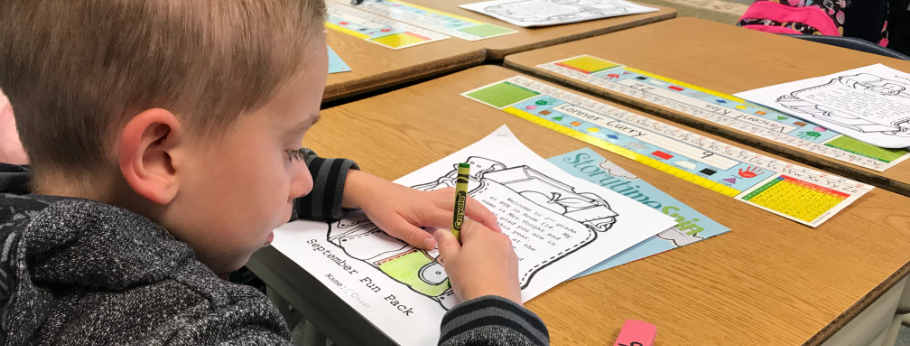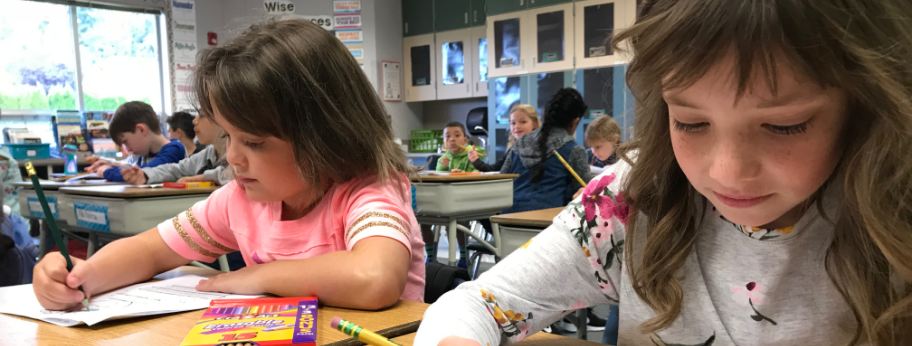
LHS math gets students up creating and discussing
When math students sit at a desk locked into a paper worksheet, they often place a focus on procedures, working individually. Getting students up, out of their seats, congregating at whiteboards helps start a discussion about math, opening up new approaches and encouraging students to solve problems.
And that’s the focus at Lynden High School’s math department: problem solving.
“Our strategies are all oriented around finding ways to have students working together, collaborating and talking with one another to understand mathematics,” says Jordan VanderVeen, math teacher. “We want to break students out of that mindset of sitting at a desk and doing whatever paper is in front of them and have them try to engage in a learning opportunity rather than a task completion. We want them to have an opportunity to work together and understand ideas and make sense of the content they are facing.”
That’s why you see whiteboards lining the math classroom at the high school. “It is not about one person memorizing a procedure and then forgetting, but a collaborative exercise to develop understanding of content,” VanderVeen says. “We want students to develop a conceptional understanding of why we care, what the math can do for us, what the math really means and how it is all connected. When we start talking about math and explaining to one another what is going on and why we can do things, then we start hitting concepts and something deeper is going on.”
VanderVeen gave an example from a freshman Algebra class. One problem he posed to students looked simple from the outset. It read: 285 + 329 – 285. Many of the students started in on the procedures they had long known, manually adding 329 to 285 and then subtracting 285 from that number. But VanderVeen says that problem was all about showing students how they need to change their approach to looking at a problem and problem-solving before they simply attack it.
“I want them to look at a problem and make sense of it instead of jumping to a procedure,” he says. “I don’t want them to be procedural animals, I want them to think and analyze a problem, think about strategies and then make sense of it. Math becomes a tool for problem-solving and looking at situations and thinking. We can talk about what can we do to make this easier or find tricks to solve the problem while applying different tools.”
In the earlier example, students who took a moment to examine and analyze the problem would have likely seen quickly the number they were adding at the start was the same as the number they were subtracting at the end, meaning they didn’t need to spend that time walking through the procedure, but simply see the situation for what it was: 329.
“I don’t want them just jumping into solving,” VanderVeen says, “I want them thinking about problem.”
The LHS math department, eight teachers strong with four dedicated solely to math and four teaching both math and another subject, have all embraced the whiteboard strategy to some degree. VanderVeen says that the whiteboard alone has impacted student experiences in multiple ways. He sees a level of student engagement and interest growing, as they see math not as a process, but as a learning concept. Allowing them to delve into the meaning of math gets more of them excited, he says. VanderVeen has also seen this lead to success on deeper-thinking problems.
“We aren’t afraid to ask questions that require students to think,” he says. “Allowing students opportunity to think, discover, engage in deeper questions means the rigor of content we ask students to delve into is better than what it otherwise would be.”
Not only has the whiteboard increased student engagement with content and discussion, but the intrinsic value of a whiteboard comes from the ease of erasing, allowing students to start something and then wipe it away and take a different approach, if they choose. “Having a safety valve of coming back to change it relieves pressure,” VanderVeen says. “It can be a lot harder on paper to summon the will power to write it down in case you are wrong, or someone disagrees.” The whiteboard, then, serves as a tool to help get past that mental threshold and explore new ideas.
As the math department continues its efforts of exploration and collaboration leading toward understanding, VanderVeen says they have pushed for students to further explain what they are learning. “We are trying to find ways for students to talk about math,” he says. “It is not about a process, we are not trying to indoctrinate students in a procedure, like a cookbook. A computer can do that. We are trying to find ways for students to become more creative problem solvers and think about different ways to approach math.”


